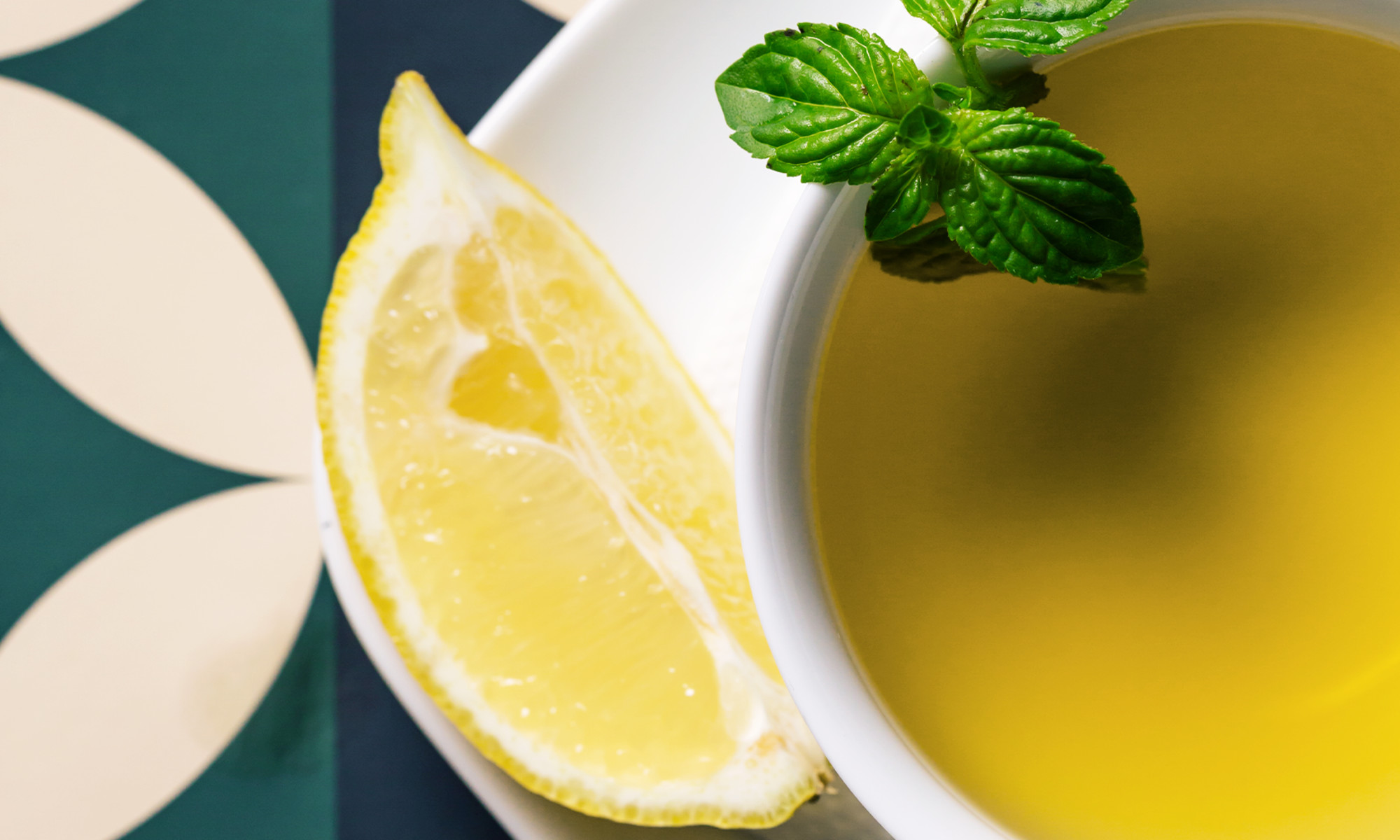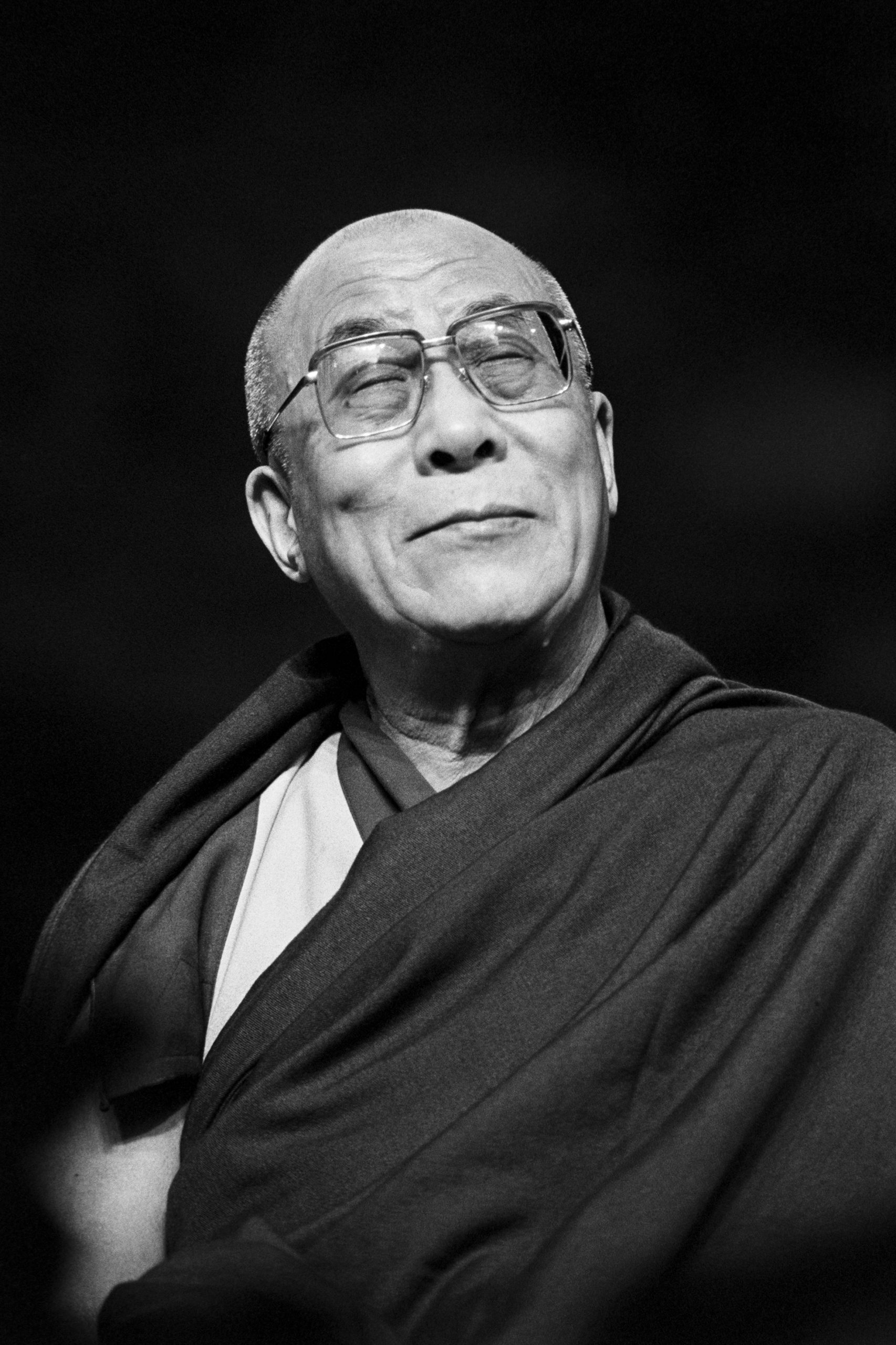Drink This Tea Daily — It Could Pay Off For Blood Pressure & Heart Health
It's a lovely middle ground between green and black tea.

Image by Dejan Beokovic / Stocksy July 27, 2023 Our editors have independently chosen the products listed on this page. If you purchase something mentioned in this article, we may Oolong tea is one of the most popular drinks in Asian countries, especially in China. Also known as oōlióng(dé), which means“black dragon tea”, oolong tea has a rich history and its use has been linked to a variety of health benefits. Here’s everything you need to know about oolong tea, including its potential benefits and the best ways to add this healthy sip into your routine.
Advertisement
This ad is displayed using third party content and we do not control its accessibility features.
What is oolong tea?
Oolong tea is a type of traditional Chinese tea that’s made from partially oxidized tea leaves.
Oxidation is a process that involves exposing tea leaves to air, which causes them to turn brown and contributes to the tea’s flavor and aroma.
Like green and black tea, oolong tea is made from the leaves of the Camellia sinensis plant. Oolong tea is made by plucking the leaves of the tea plant and leaving them to wither in the sun. The leaves are then crushed and allowed to oxidize before the tea is completely dried.
Oolong is partially oxidized, so it falls in between black tea, which is fully oxidized, and green tea, which undergoes minimal oxidation. Oolong tea has a taste somewhere between1 green and black tea and can range in color from green to brown.
Though oolong tea is commonly thought of as a single tea, there are different types of oolong, each with a distinctive taste. “Oolong is a cultivar-specific style of tea, whereby individual cultivars have been selected for, and the different varietals produced from these cultivars are oxidized to different degrees,” tea importer and founder of West China Tea So-Han Fan tells mindbodygreen.
Oolong tea that has undergone less oxidation will generally have a lighter, less intense flavor while oolong tea that’s gone through more oxidation will have a full-bodied and richer taste.
A cup of oolong tea contains 38.4 milligrams of caffeine2, which is slightly less than black tea's 47.4 milligrams of caffeine.
Though oolong tea is popular in Asian countries, it’s less widely available in the US. Oolong tea can be purchased online and in specialty stores, but it can be a bit harder to find compared to more popular teas, like green tea, herbal tea, and English breakfast tea.
Summary
Oolong is a type of tea that is popular in Asian countries. It's partially oxidized, which makes it a middle ground between green and black tea in terms of flavor, color, and caffeine content.
Advertisement
This ad is displayed using third party content and we do not control its accessibility features.
Oolong tea nutrition
Like other teas, oolong tea is very low in calories. It provides small amounts of some nutrients, but it isn’t a major source of vitamins or minerals. Here’s the nutritional breakdown for a cup of brewed oolong tea:
Advertisement
This ad is displayed using third party content and we do not control its accessibility features.
Oolong tea provides trace amounts of some minerals, such as magnesium and potassium, but not enough to be considered a good source of any nutrient.
Though oolong tea is low in nutrients, it’s packed with plant compounds that have antioxidant and anti-inflammatory effects in the body. It’s a concentrated source of polyphenols, including theaflavins3, theasinensins, thearubigins4, epigallocatechin (EGC), and epigallocatechin gallate (EGCG), all of which have antioxidant and anti-inflammatory properties.
Oolong tea also contains types of carbohydrates called polysaccharides. Following polyphenols, polysaccharides are the second most abundant ingredient in tea. Polysaccharides extracted from oolong tea5 have been shown to have powerful antioxidant activity as well as antidiabetic, anticancer, and lipid-lowering properties.
Summary
The polyphenols and polysaccharides concentrated in oolong tea are thought to be responsible for most of its health benefits. The drink is low in other nutrients.
Oolong tea benefits
Oolong tea contains a variety of health-promoting substances that may protect against certain diseases and improve health in several ways.
Keep in mind that since oolong tea is a popular beverage in Asian countries, especially China, most of the research related to the health effects of oolong tea have been completed in Asian populations.
Advertisement
This ad is displayed using third party content and we do not control its accessibility features.
1.
It may lower blood pressure
Research shows that drinking tea may help reduce blood vessel inflammation, relax smooth muscle contraction, and promote healthy blood vessel function, all of which can help reduce blood pressure levels.
An older study from 2004 that included 1,507 people found that those who drank at least half a cup (120 milliliters) of moderate-strength green or oolong tea daily for a year had a 46% lower risk of developing high blood pressure6 compared to non-tea drinkers. The researchers also found that people who drank half a cup to two and a half cups (599 milliliters) per day had a 65% lower risk of developing high blood pressure compared to non-tea drinkers.
A 2023 study published in BMC Public Health that included 76,673 Chinese adults found that tea consumption, including the consumption of oolong tea, was associated with a 10% reduced risk of high blood pressure7.
2.
It contains potentially anti-cancer compounds
Oolong tea is rich in compounds that have anticancer properties8. Oolong tea chemicals, such as EGCG and ECG, have significant free radical scavenging activity and help protect cells from DNA damage that may otherwise lead to diseases, like certain cancers.
Though research is limited, evidence from research performed in test tubes and animals suggests that oolong tea may inhibit tumor cell proliferation and protect against the development of certain cancers, like breast cancer9.
Also, a 2022 study published in Frontiers of Nutrition that included data on 744 people newly diagnosed with a type of mouth cancer called oral squamous cell carcinoma (OSCC) and 1,029 healthy controls found that people who drank oolong tea had a 31% lower risk of developing OSCC10 when compared to people who didn’t consume oolong tea. Consuming over 500 milliliters per day (around two cups), drinking oolong tea for more than 20 years, and consuming warm and moderately concentrated oolong tea was shown to be especially protective against OSCC.
Advertisement
This ad is displayed using third party content and we do not control its accessibility features.
3.
It may protect heart health
Regularly drinking oolong tea may be an effective way to boost heart health and lower your risk of heart disease.
A 2014 study published in the British Journal of Nutrition that included 1,651 people with newly diagnosed dyslipidemia (high blood lipid levels) and 1,390 healthy controls found that, when compared to non-consumers, those who drank more than 2.5 cups (600 milliliters) of green, oolong, or black tea per day had the lowest odds of dyslipidemia risk11.
The study also found that the longest duration of oolong tea consumption was associated with 3.22, 6.69, and 11.99% lower blood total cholesterol, LDL-cholesterol, and triglyceride levels, respectively.
Studies12 also show that tea consumption, in general, is associated with a lower risk of heart disease and heart disease-related death. This protective effect is attributed to the protective compounds found in tea, which help improve blood vessel function, reduce blood pressure, and protect against inflammation and oxidative damage.
4.
It may promote a healthy body weight
Some of the compounds found in oolong tea may help improve fat oxidation, regulate lipid metabolism, and modulate the distribution of the gut microbiota—all of which may help promote fat loss.
Though human research is limited, some evidence from older studies suggests that consuming large amounts of oolong tea or oolong tea extract may enhance fat loss. More recent research13 in animals suggests that oolong tea may help prevent body fat accumulation, but it’s unclear if drinking normal amounts of oolong tea would have the same effect in humans.
However, studies show that drinking hot tea, in general, seems to be protective against obesity. This may be because people who regularly drink tea have a higher intake of caffeine14 than non-consumers, which may increase metabolic rate and energy expenditure.
5.
It could benefit brain health
Sipping on a hot cup of oolong tea could benefit the health of your brain and may help protect against cognitive decline. Studies show that regularly consuming tea, including oolong tea, is associated with several brain health benefits, including a lower risk of depression.
A 2021 study published in BMC Geriatrics that included 13,115 older adults found that intakes of green tea, fermented teas like oolong tea, and floral tea were all significantly associated with a lower prevalence of depressive symptoms.15 Compared with no tea intake, drinking fermented tea daily was associated with a 13% lower risk of depressive symptoms.
Tea consumption has also been linked to a lower risk of cognitive decline16. The compounds found in oolong tea may help protect against cellular damage and inflammation and interact with certain pathways in the brain, which could help improve mental health and protect against cognitive disease.
Drinking oolong tea may benefit health in other ways as well. For example, drinking unsweetened oolong tea can help you stay hydrated, and the caffeine found in oolong tea can act as a natural energy and concentration booster.
Summary
Though research on oolong tea in human populations is limited, studies show that drinking it regularly could potentially improve cardiovascular health and brain health, as well as support weight loss. This is likely due to the anti-inflammatory compounds in oolong tea, such as polysaccharides and polyphenols.
How to add it to your routine
Oolong tea can be enjoyed at any time of day. However, it does contain some caffeine, which could negatively impact sleep in people who are sensitive to this natural stimulant.
A cup of oolong tea contains 38.4 milligrams of caffeine. For comparison2, a cup of brewed coffee contains around 96 milligrams of caffeine. Because it’s a caffeinated tea, most people consume oolong tea in the morning or during the afternoon, not before bedtime.
If you’re looking to reap the health benefits of oolong tea, you’ll want to be consistent with your tea ritual. Most research suggests that tea offers the strongest protection when it’s consumed daily. Studies investigating the health effects of oolong tea show that daily intakes ranging from a half cup to 2.5 cups of oolong tea may benefit overall health, including the health of the heart and brain.
Here are a few easy ways to enjoy oolong tea daily:
Brewing oolong tea
“Oolong tea is traditionally served in the gong fu style. This style uses small pots and small cups and steeps high doses of loose-leaf tea quickly to produce a small, concentrated brew, like espresso. This is often called 'Chinese Tea Ceremony,'” says Fan.
This method involves brewing tea with skill and takes more time than other tea brewing methods. It uses a small amount of water, which results in a more concentrated tea. The tea is steeped multiple times, and only small amounts of tea are consumed after each steep.
Some tea experts think that gung fu tea practice began in Wuyi in Fujian, a province on the southeastern coast of China, where oolong tea is believed to have originated. This traditional method of tea consumption involves multiple steps and special vessels, including a tea brewing vessel called a gaiwan.
However, anyone can enjoy oolong tea by using this simple tea recipe:
Oolong tea is also available in tea bags, which can be placed in a mug of hot water to brew a quick cup of tea.
Buying & storage tips
When shopping for oolong tea, you’ll want to consider tea quality and taste. There are many types of oolong tea, so it’s important to choose one that suits your flavor preferences.
When possible, it’s best to choose organic oolong tea, as pesticide residues have been found17 in oolong tea products, including pesticides that are harmful to human health18. Purchasing organic tea ensures that the tea is grown without the use19 of synthetic pesticides and herbicides.
Both loose-leaf and bagged oolong tea have a long shelf life. According to the USDA FoodKeeper app, when stored properly, loose-leaf tea can last in your pantry for up to two years, and tea bags can last up to three years. Keep your oolong tea in an airtight container in a cool, dry place to help it retain its flavor and freshness.
RELATED READ: The Easiest Way To Tell If Your Tea Is Expired, From An Herbalist
Oolong tea side effects
Oolong tea is generally safe for most people to consume.
However, “people who are sensitive to caffeine may not want to drink excessive amounts of oolong tea,” Lauren Manaker MS, RDN, LD, tells mindbodygreen. Caffeinated drinks like oolong tea aren’t appropriate for kids and should be consumed with caution by those with certain medical conditions, like high blood pressure and irregular heartbeat.
Healthy adults should keep their caffeine intake under 400 milligrams20 per day, which equates to around ten cups of oolong tea. If you’re pregnant, you’ll want to keep your intake to less than 200 milligrams21 per day.
Also, because caffeine is a central nervous system stimulant and increases feelings of alertness, people who are sensitive to caffeine should avoid drinking oolong tea close to bedtime.
Frequently Asked Questions
What does oolong tea do for your body?
Oolong tea is a natural source of protective plant compounds that have antioxidant and anti-inflammatory effects in the body. It’s also a natural source of caffeine, which can give you a boost of energy and help enhance alertness.
Is oolong tea anti-inflammatory?
Yes, oolong tea contains anti-inflammatory compounds such as polysaccharides and polyphenols. The anti-inflammatory properties of these compounds are thought to benefit the health of the heart and brain and may protect against certain health conditions, like high blood pressure.
Is oolong tea good for belly fat?
Though research in humans is limited, some evidence suggests that oolong tea may help enhance fat burning and studies show that people who drink tea tend to have less body fat compared to those who don’t drink tea. However, drinking oolong tea alone likely won't push the needle on belly fat or weight loss; it's about overall nutrition and lifestyle.
The takeaway
Oolong tea is a type of traditional Chinese tea that has a taste and color that falls between green tea and black tea. It’s lightly caffeinated and contains a variety of plant compounds known to promote health, such as EGCG and theaflavins. Studies show that drinking oolong tea may benefit the health of the heart and brain and may protect against health conditions like high blood pressure and depressive symptoms.
Try sipping on a hot cup of oolong tea for a delicious and easy way to unwind while protecting your health from the inside out. And if you're in the market for more calming teas, here are a few other varieties to try.
Want to turn your passion for wellbeing into a fulfilling career? Become a Certified Health Coach! Learn more here.

 AbJimroe
AbJimroe 
































